We are thrilled to announce the birth of three wild tiger cubs here at Tiger Canyon Private Nature Reserve.
Safely hidden away in a remote den site with mother TiBo, the tiny newborn cubs were first spotted by guide Greg on Wednesday, 28 June 2023. Thanks to the wonders of modern photographic equipment, McCall-Peat was able to capture rare footage of the tiny cubs feeding.
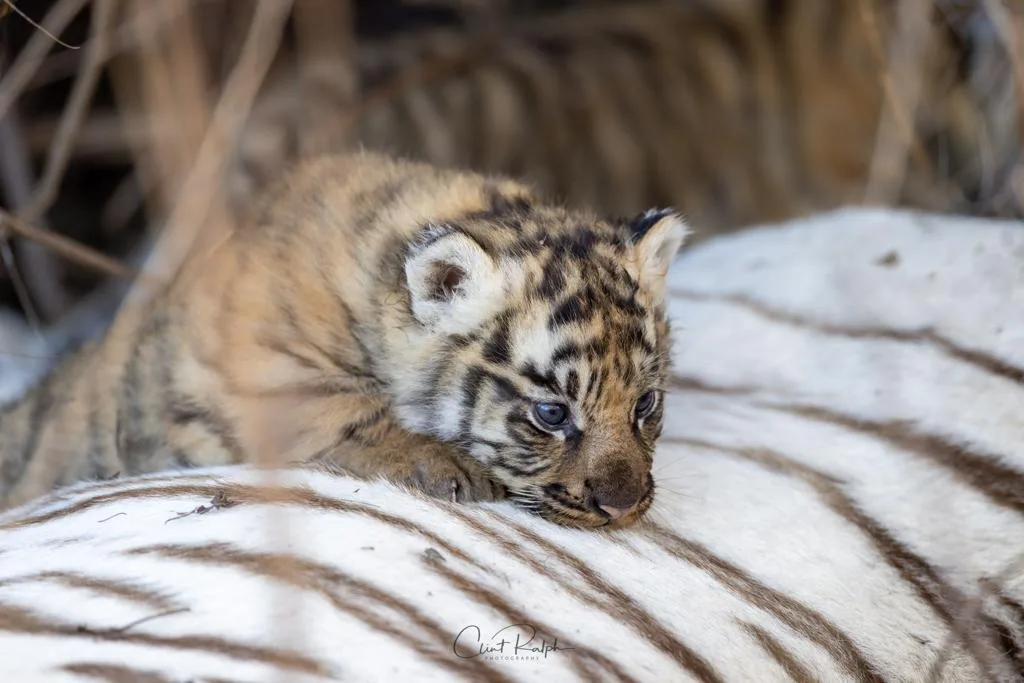
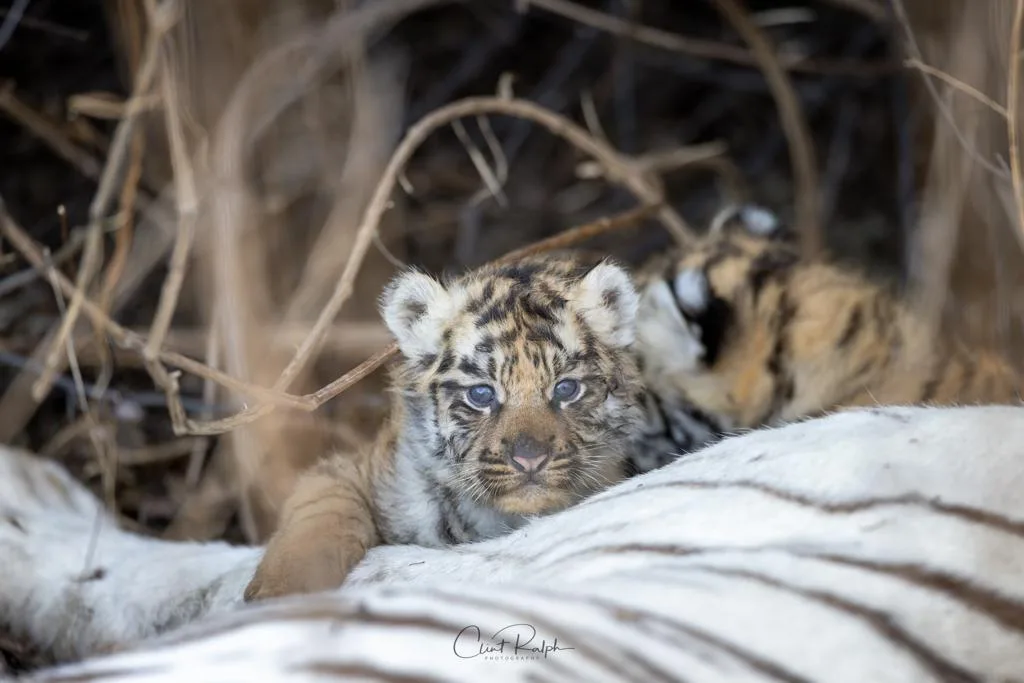
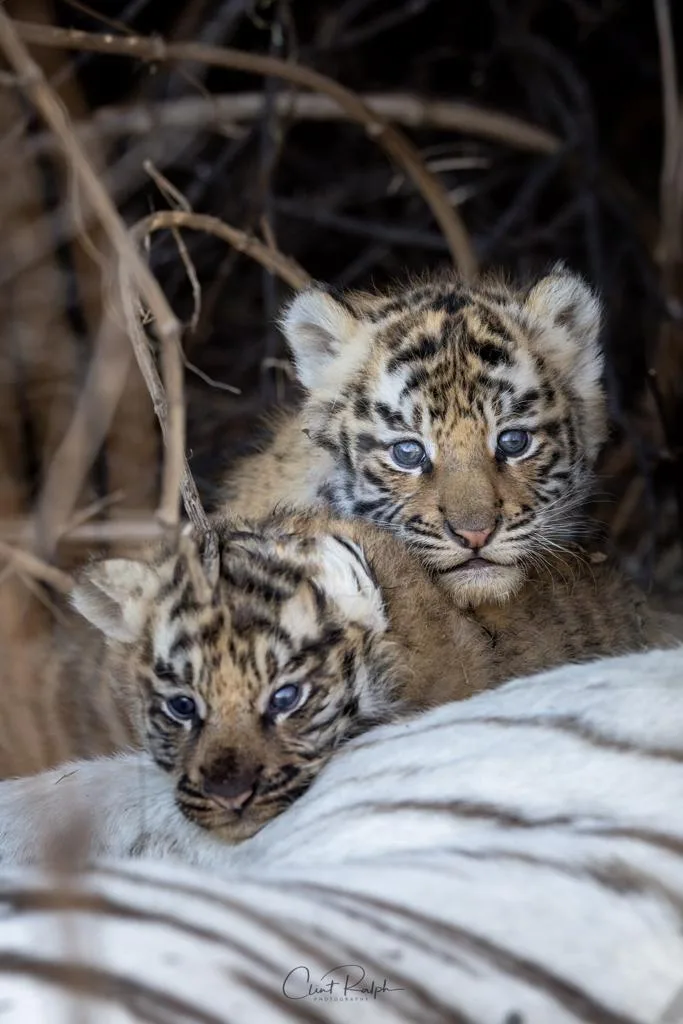
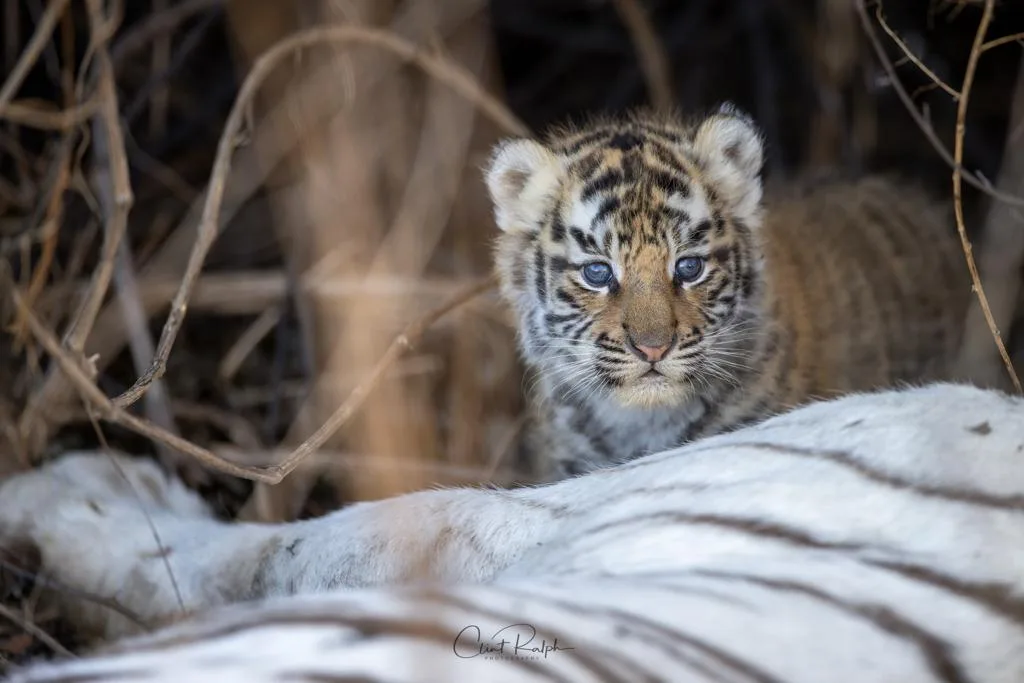
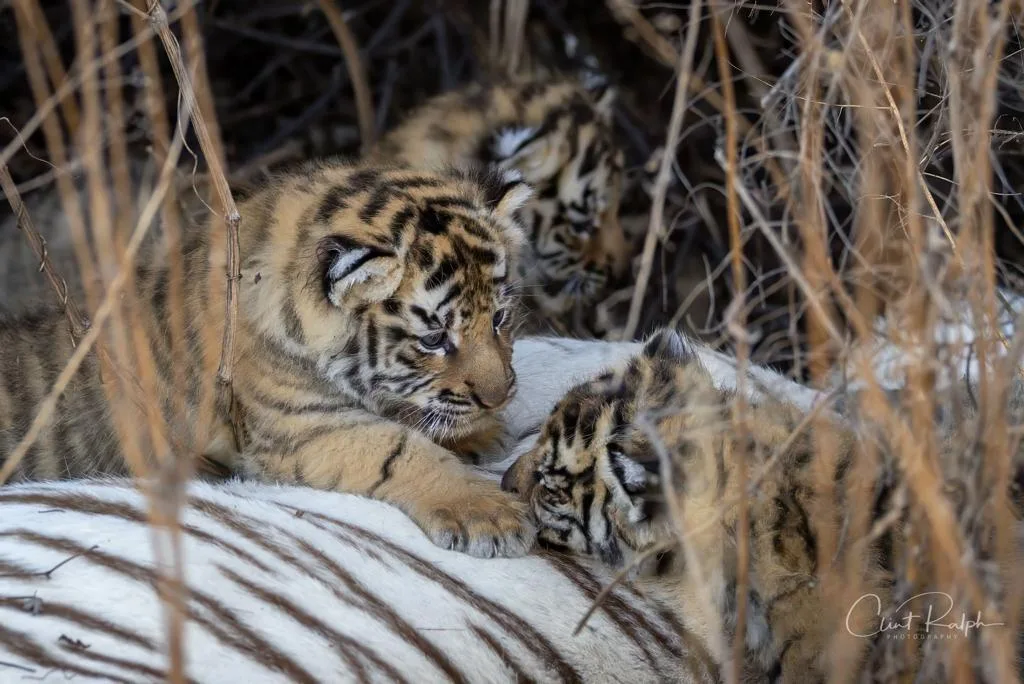
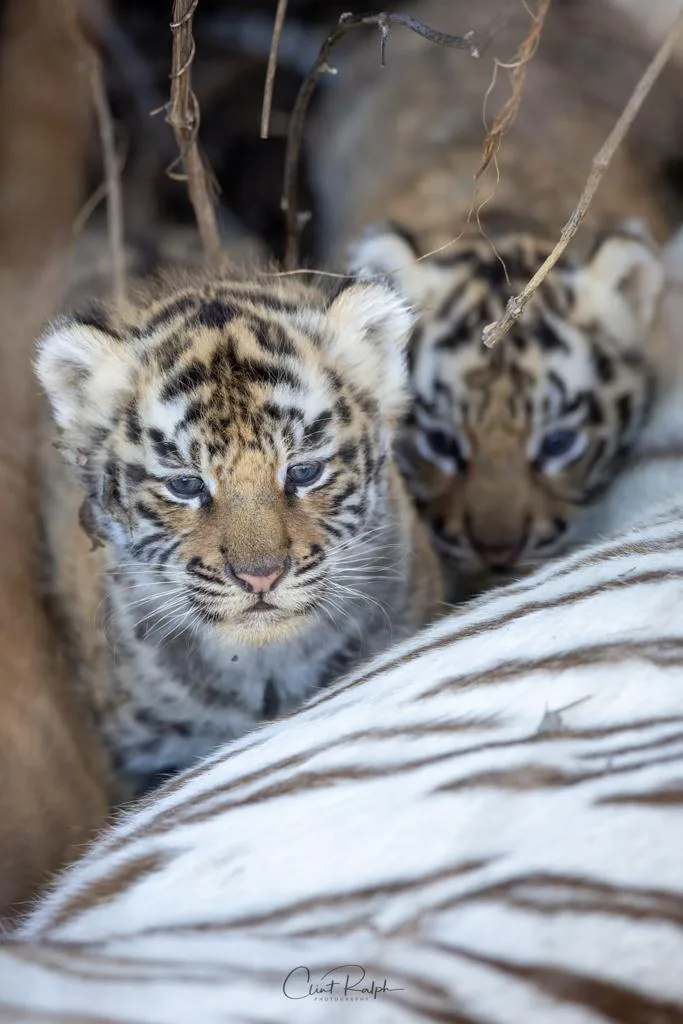
A week or two later, guides Daniella and Adi reported that TiBo had moved the den site.
“This is very common with tigers, because the longer they stay in one place, the more vulnerable they are to detection by other predators,” explains our Managing Director, Rodney.
Despite the new den site being even more difficult to peer into than the previous one, Daniella managed to capture some candid footage of the still wobbly, but growing cubs.
As they get stronger and more independent, the cubs will slowly but surely start emerging from the den site with TiBo.
Tiger cubs typically stay with their mother for up to three years, until they are able to fend for themselves. After this, the mature cubs will disperse and seek out their own territories. Like leopards, they are solitary predators who only come together as a family when cubs are born.
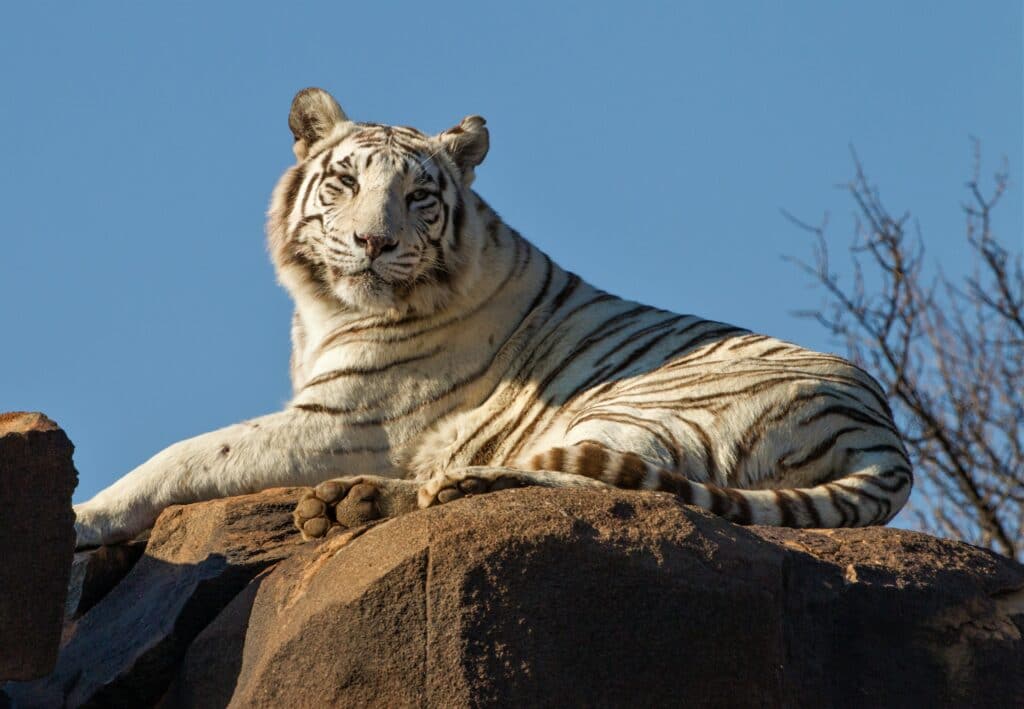
A win for wild tiger conservation
What makes the birth of these cubs even more special is the fact that TiBo (short for Tiger Bomb) is a white tigress who was born wild at Tiger Canyon in 2010.
While white tigers are not an uncommon sight in captivity, Tiger Canyon is home to the only two free-roaming, wild white tigers in the world – TiBo and her sister.
Due to a rare genetic mutation, white tigers are one of nature’s wonders. In order for a white tiger cub to be born, both its mother and father must carry a specific recessive gene.
Sired by Kumba, a hand-raised tiger rewilded at Tiger Canyon in 2014/5, TiBo’s cubs don’t appear to have inherited their mother’s unique hue.
“The birth of any cubs signals the survival of a species,” says Rodney. “When cubs are ‘wild born and wild raised’ from captive-born parents (or one captive-born parent, in this case), the birth is an important part of rewilding, as each generation is wilder than the last and contributes to strengthening the natural wild instincts needed by the species to survive in a wild ecosystem.”
Once a tiger spends decades or generations in captivity, its wild instincts (inherent in genetic memory) are lost – progressively forgotten or no longer contained in the genetic code of the species.
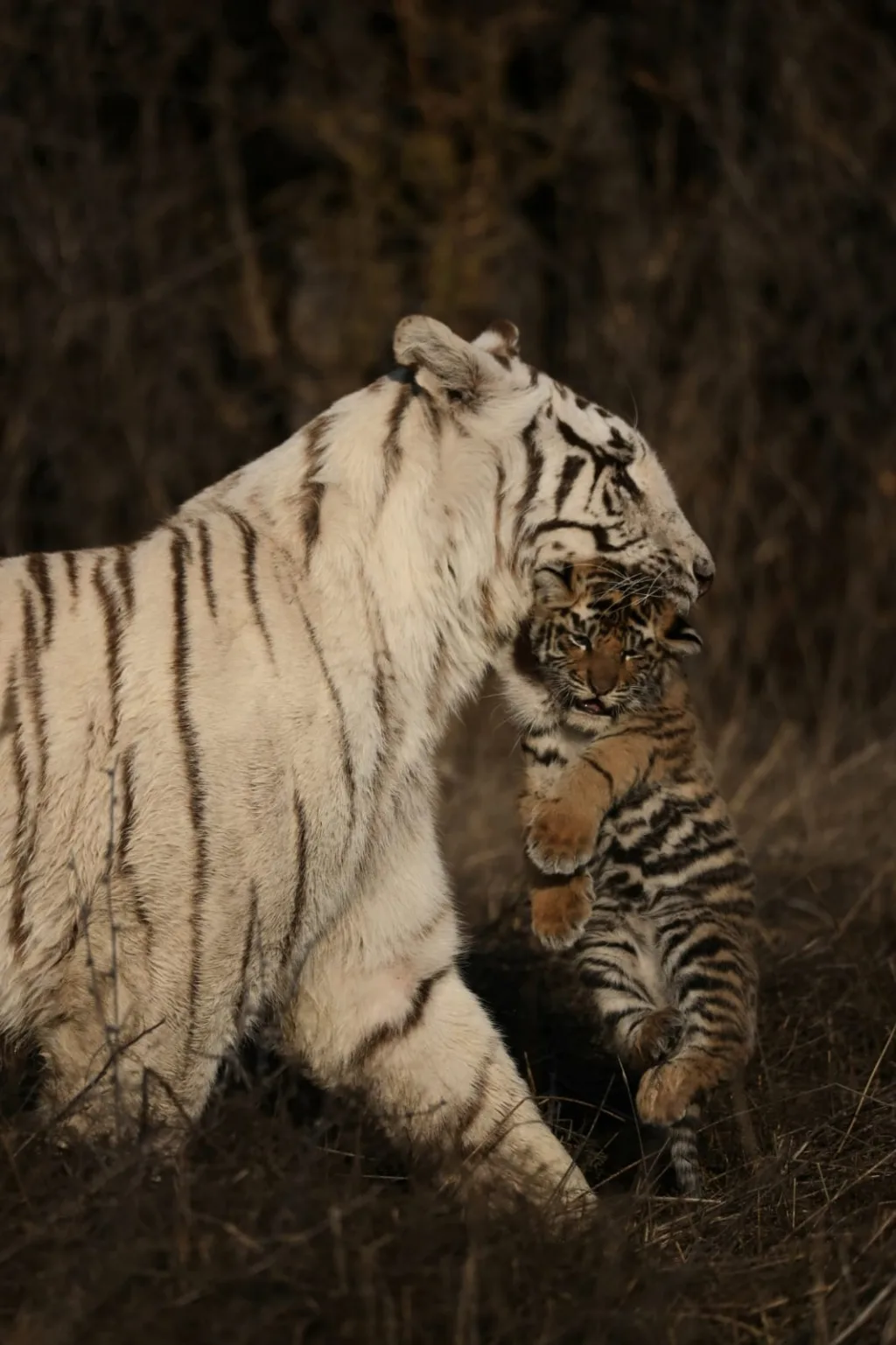
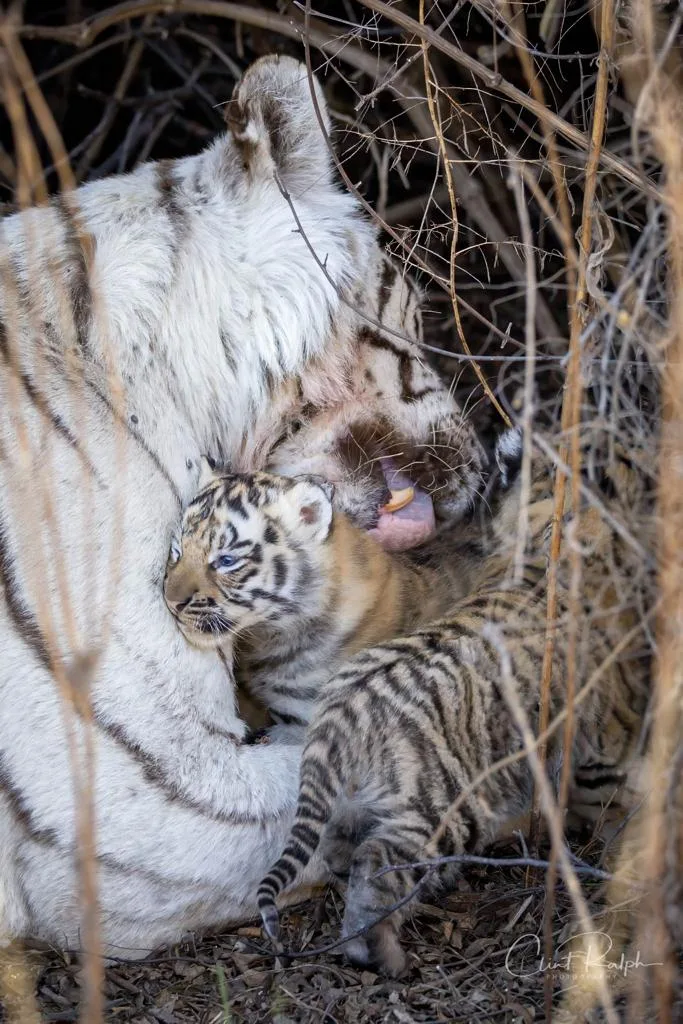
While it is difficult to determine the exact number of wild tigers remaining in the world, the latest estimates from the International Union for Conservation of Nature (IUCN), suggest that the global wild tiger population hovers around 3,900 individuals, while the captive population sits somewhere around 5,000 individuals. These figures contrast starkly with those of the early 20th century when the wild tiger population was said to exceed 100,000.
As the wild tiger’s once expansive original home range continues to shrink and become ever more fragmented, it is crucial to explore alternative conservation strategies.
“Rewilding is a crucial concept for any species whose numbers are dwindling with more animals being held in captivity than roaming wild and free, as they should,” says Rodney. “Tiger Canyon is the only ex-situ tiger project in the world where rewilding of endangered big cats is being empirically researched.”
Read more about our conservation purpose here and book your own once in a lifetime safari experience to experience rewilding at work.
For bookings check availability here
